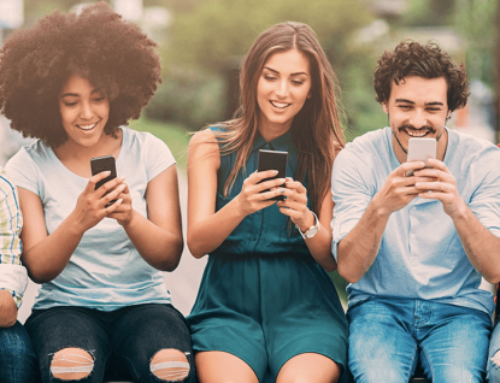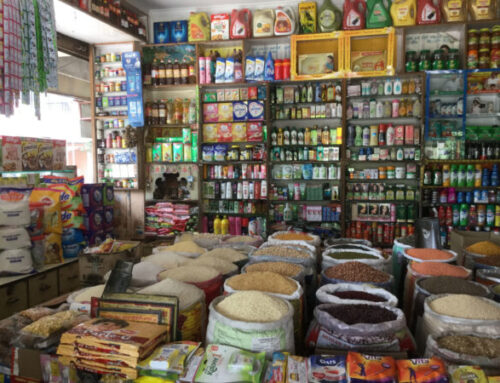Impact of COVID -19 on Consumer Behaviour in Food Service Industry
Life will hardly remain the same when we get to the other side of the Covid-19 pandemic. Economists and social scientists are predicting lasting changes in the way we live, work and eat. History shows that such changes are not always temporary—crises can fundamentally reshape our beliefs and behaviours.
Some of these were already in the making but are expected to be fast-tracked as people change their habits to contend with the epidemic. What changes will we see in India?
How will the pandemic affect restaurants and the culture of eating out that had been steadily evolving in the last decade and a half, but was impacted by the economic slowdown for several months now? One of the sectors worst affected by Covid-19 will be food services, estimated at Rs 4,23,865 crore in India and employing more than 700,000 people, according to the National Restaurant Association of India. As brick-and-mortar businesses shut down, restaurants are struggling, but small efforts are afoot to salvage whatever they can.
An Epidemic impact on consumer purchase behaviour
The collapse of the worldwide economy by COVID -19 pandemic is comparable with earlier major economic adjustments. Be it the SARS outbreak in China, the Fukushima Nuclear Disaster or the Earthquake in Japan, the MERS outbreak in South Korea. And while there is a lot of discussion about the Great Recession of 2008, the current crisis has more in common with World War II.
Major disruptions can cause fundamental shifts in social attitudes and beliefs, which pave the way for new policies, ways of working, and consumer needs and behaviours, some of which persist in the long run.

The Black Death, which killed 25 million to 30 million people in 14th-century Europe brought an end to feudalism. We can say without exaggeration that the plague shaped the path of European history.
We can also consider the impact of World War II on women’s participation in the workforce. With a large share of the working-age population deployed in the war effort, women were encouraged to fill jobs on the domestic front, through efforts to reduce social (and sometimes legal) barriers. After the war, the effects of these shifts persisted, driving an acceleration of female workforce participation.
The 9/11 terrorist attacks similarly reshaped transportation and security policies worldwide. There was a collective shift in societal attitudes about the trade-off between personal privacy and security. As a result, citizens accepted higher levels of screening and surveillance in the interests of collective security.
Societal crises can also have lasting effects on consumption patterns. For example, the 2003 SARS outbreak in China changed attitudes toward shopping: because many people were afraid to go outside, they turned to online retail. Though the crisis was short-lived, many consumers continued to use e-commerce channels afterwards, paving the way for the rise of Alibaba and other digital giants.
The impact of Coronavirus has some similarities to SARS in 2003. Kantar Worldpanel China reviewed our consumer purchase data in China 15 cities back in 2002-2003 to shed light on how consumer behaviour changes might bring new challenges and opportunities for manufacturers and retailers.
The impact on the FMCG Market
The first SARS case was discovered in Guangdong province in December 2002 and the first reported case outside of Guangdong happened in Beijing in March 2003. However, the major increase of infection happened in April and May 2003 and the spread of the virus was contained by June.

The impact on the FMCG market during the first half of 2003 was significant especially during April and May where we observed a sharp slowdown. However, by June the market had recovered returning to similar growth rates seen at the beginning of the year.
Categories In High Demand During SARS
The dine-out market was heavily impacted during SARS as consumers opted to dine at home instead. Culinary and instant food categories showed a noticeable sales increase in the 12-weeks ending May 2003. During this period, consumers also increased their purchase of Household Cleaning and Personal Cleaning products.

Handwash was a very small category in China back in 2002. This category has become more and more popular since 2003 as consumers started to purchase more handwash during SARS
The impact on retailers
supermarkets back in 2003. Supermarkets and Convenience Stores showed a significant increase in sales during the 12-weeks ending in May 2003.

2003 was the year when E-commerce started emerging in China. On May 10 2003, Taobao was launched, followed by 17 years of continuous growth, along with many other EC platforms.
In 2020, we expect to see a large switch of shoppers spend to omnichannel purchasing and an increased share of EC retailers during this past Chinese New Year. The “No Physical Contact” new OTO/EC delivery model fits very well with consumers’ needs when advised to stay at home.
Coronavirus as compared to previous outbreaks
As compared to SARS and MERS, Coronavirus has spread much more quickly. The latest data suggests that it’s less deadly than either SARS or MERS. It will take several weeks to be confident about how the virus behaves, including its mortality rate.
International alarm over the coronavirus that emerged in Wuhan, China, in December is driven by its rapid spread and the fact that infectious disease experts cannot yet know how deadly or contagious it is.
Within weeks, the virus has infected more people than Severe Acute Respiratory Syndrome (SARS) did in months. On Jan. 30, the World Health Organization declared the outbreak a global emergency.
The chart below shows the cumulative number of cases starting from the day that symptoms were documented for the first case. When compared to the coronavirus, the spread of SARS took much longer to gain momentum. Middle East Respiratory Syndrome (MERS) that first emerged in Saudi Arabia in 2012, took eight years to infect almost 2,500 people.

Disease experts caution that it will take several more weeks to be confident of how the coronavirus behaves given how quickly it has spread and the fact that a reliable diagnostic test has only recently been introduced.
Some experts question whether the coronavirus shares similarities with seasonal flu, which has a low mortality rate but infects so many people that more than half a million may die from it each year, according to global health estimates.

How will Coronavirus bring about a shift in Consumer Behaviour
Lessons from the past disasters are expected to drive the pace of recovery of the different sector from the CoVID-19 outbreak that has the world in its grip. Lasting shifts in social attitudes, behaviour, policy, work and consumption will likely also emerge from the COVID-19 pandemic.
Among the biggest losers from this behavioural change would be the restaurants and movie theatres. About 64%, according to the Nielsen study, intend to spend less on restaurant and movie theatre visits.
The automobile, luxury brands and leisure travel too are set to feel the impact. Over 54 per cent said they would spend less on them in the coming days. Also, over 43 per cent would defer spending on fashion, personal grooming and home décor.
Another set of businesses to be affected would include alcohol and tobacco products with more than 42% saying they would spend less on alcohol and tobacco products.
With a greater number of people turning to online purchase of their groceries, e-commerce has come to find favour with a greater number of people. Hence, 57% of the Corporate Leaders now talk about more focus on e-commerce as a top priority in the next 12 months.
Also, 39% of consumers stated that they will increase online shopping by more than 20%, post-COVID situation.
According to the ‘Nielsen COVID-19 Impact on FMCG and Retail’, the pandemic has brought about a marked change in people’s sense of hygiene. The study found that over 55% of those who participated said they intend to buy more of personal hygiene and safety products in the future.
Also, over 56% of the respondents said, they will increase the spends on healthy, organic food, medical needs, fitness, Mediclaim etc. There’s a marked shift in the priorities of people too. Over 47% said they will consider spending more on education. Also, 41% said they planned to increase investments across various financial instruments.
After the COVID-19 crisis settles, we will come face to face with a world that would have undergone transformative changes and businesses will have to prepare for it to grow.
We can visualize the field of possibilities by observing fundamental attitudinal and behavioural shifts and creating branching trees of potential ramifications. Fundamental shifts among consumers could include more time at home, more emphasis on hygiene and health, or greater emphasis on family security. Producer shifts could include embracing remote working, streamlining operations, decentralizing supply chains, and emphasizing crisis preparedness and systems resilience. Each of these basic shifts has manifold potential consequences. For example, the potential implications of increased time at home are shown is below exhibit
Potential implications of spending more time at home

Possible Consequence of COVID -19 on India’s Economy
| Scenario 1: The optimistic scenario (temporary impact of COVID-19 and a V-shaped recovery | ||||
| Quarters | Q4 FY20 | Q1 FY21 | Q2 FY21 | Q3 FY21- Q4 FY22 |
| GDP growth | 4.0%-4.2% | 2.5%-2.8% | 4.1%-4.3% | 5.5%-6.8% |
| Inflation | Moderate | Low | Low | Rises but moderates around the target rate |
| Scenario 2: Somewhat optimistic scenario (a severe and extended impact of COVID-19 with a U-shaped recovery) | ||||
| Quarters | Q4 FY20 | Q1 -Q3 FY21 | Q4 FY21 | Q1 FY22- Q4 FY23 |
| GDP growth | 4.0%-4.2% | 2.2%-3.0% | 4.2%-4.4% | 5.5%-7.5% |
| Inflation | Moderate | Low | Moderate | Rises above 4%, moderates by Q4 FY21 |
| Scenario 3: The pessimistic scenario (prolonged severe downturn leading to a new level of normal) | ||||
| Quarters | Q4 FY20 | Q1 -Q4 FY21 | Q1-Q4 FY22 | Q1 FY23- Q4 FY23 |
| GDP growth | 4.0%-4.2% | 2.2%-3.5% | 4.4%-4.5% | 5.0%-6.0% |
| Inflation | Moderate | Moderate | Moderate | Moderate |
Note 1: In scenario 2, inflation picks up in H2 FY21 as demand revives faster than supply. Inflation is expected to increase above the target range (4 per cent) for a short period of time in FY21 because of economic overheating. In this scenario, inflation remains around 3-4 per cent during this period, despite weak demand because of a sharper fall in production.
| Sector (impact as a % share within the sector) | Hotels, restaurants and other personal services | |
| Best case | GDP | -0.1 |
| Employment | -0.09 | |
| Moderate case | GDP | -0.18 |
| Employment | -0.17 | |
| Worse case | GDP | -0.31 |
| Employment | -0.29 | |
| Hypothetical worst case* | GDP | -1.64 |
| Employment | -1.64 | |
Source: ADB, Deloitte analysis
The New Norm in Food & Service Business
The coronavirus crisis is forcing all consumers to adopt new habits surrounding dining at restaurants and eating in general.
After the pandemic has passed, consumers expect to be much less reliant on takeout than they are now, according to a survey by AMC Global, a market research firm.
Currently, 33% of consumers say they’re getting more takeout than before the pandemic. But just 13% of consumers say they expect to be as reliant on off-premise dining after the threat passes.
“The current pandemic is changing consumer behaviour and will continue to have an influence even when the crisis subsides,” AMC Global said in a news release.
Among the poll’s other findings:
45% of consumers say they’re currently eating less fast food than they normally do.
32% of those polled plans to make more home-cooked meals after the virus passes.
Currently, 33% of consumers are baking more than they typically do.
40% of those surveyed said they plan to focus more on saving and budgeting their money after the coronavirus threat passes.
A quarter of those surveyed said they’re currently drinking more than three alcoholic beverages per week, while just 9% say they plan to keep up that pace post-pandemic.
Other new norms could include
- Customer temperature checks could be the norm
- Social distancing may mean fewer tables and less crowded dining rooms
- Cozy, crowded bars could suffer
https://www.businessinsider.in/slideshows/miscellaneous/coronavirus-could-irreversibly-change-restaurants-with-experts-predicting-customer-temperature-checks-and-new-fears-of-crowds/slidelist/75012622.cms#slideid=75012629
The Three Lenses
Social-distancing, coronavirus and Covid-19 are three phrases now permanently etched into our lexicon.
After speaking to numerous foodservice leaders over the past few weeks, we believe it is helpful to spend some time looking forward because predicting the long-term impacts can help us better prepare our companies, processes, portfolios and employees for success.
These are unprecedented times and if the crisis is the true catalyst of change then we can expect some sea-change impacts on consumer behaviours and expectations. Operators and suppliers will respond and modify their business models for the new post-crisis world. How we plan, how we go-to-market, how we communicate and collaborate and how we interact with consumers is all going to change.
We have structured our look forward through three lenses:
- Consumers
- Operators
- Manufacturers
CONSUMERS
The long-term impacts of the coronavirus on foodservice consumers will be seen in six key transitions. Some of these changes are already taking shape as consumers struggle to adjust to their new environment while others will emerge over time as we move to the post-COVID world.
Overall, the six metrics for change include

Increased use of Delivery
- Consumers have essentially been forced into using delivery services in order to still get restaurant food.
- This “forced trial” will result in more consumers becoming comfortable with the service.
- This higher level of comfort will remain and translate into greater long-term use of foodservice delivery services.
Food safety-first mentality
- Consumers have an increasing desire to know where their food came from, how it was grown, raised and processed.
- For restaurants, this means consumers will have less patience for employees not using gloves, mishandling of food, as well as associated “cleanliness indicators” like dirty restrooms and over-flowing garbage cans.
Curb-side pickup
- It’s convenient, the food is hotter and fresher than the delivery and there is no delivery person handling it.
- It is a minimal-touch pick-up option so increasing in popularity comfortable with the service.
No-touch solution
- We are quickly moving to a no-touch world and digital ordering solutions need to evolve to allow this.
- In the meantime, we will see an array of compensating behaviours, from using a pen, to waiting in line to order through a cashier, all to avoid touching a screen to order.
Sanitization Behaviour
- The increased use of sanitizers, wipes and hand washing will likely continue.
- More consumers will carry sanitizers and wipes and also expect restaurants to supply them.
- Self-sanitizing of dining room seating and tables will become routine for many.
Improved delivery packaging
- Packaging will need to be tamper-evident and maintain the food’s temperature, moisture and presentation.
- Consumers are about to demand it and may now be willing to pay for it.
OPERATORS:
Foodservice operators now have the tall task of adjusting to the behavioural changes that COVID-19 has brought upon the consumer. Some of these adjustments will become more permanent and will force the operator to adapt. In addition, while consumers are struggling to adjust, Foodservice operators will need a seismic shift in their operations, as well in their overall business.

Industry downsizing
- Many restaurants are closing or filing for bankruptcy and will not open their doors again.
- Additionally, chains are closing poorer performing units that simply are no longer viable.
- We will see an industry contraction in total restaurant units and most likely in the value-chain that supports the industry, including distributors, brokers, service companies and suppliers.
Fewer new unit openings
- In a post-COVID environment, we can expect to see unit expansion plans curtailed
- Chains focus on rebuilding their existing business and spend resources on rehiring, marketing and promotions.
- Other restaurant operations will be taking priority over rapid franchise expansion.
New & expanded sanitization practices
- This mindset to stay with many consumers post-crisis.
- As a result, operators will introduce broader and stricter sanitization practices for food handling in front and back of house sanitization.
Increased domestic/local sourcing
- Increase in local and domestic sourcing and a move to less dependency on foreign sources
- Domestic suppliers must ensure their portfolios and capabilities can meet the expectations of operators
Fewer SKUs in the restaurant
- Smaller kitchens with less storage to cut back on the restaurant footprint
- Able to work with fewer high-quality SKUs that can be developed into multiple menu items
New investment in take-out, drive-through & delivery units
New units being built will be more likely to include –
- Drive-through
- Designated take-out/curbside service and a Separate kitchen operation to support off-premise eating.
MANUFACTURERS:
As consumers and operators shift their buying habits and operational structures, manufacturers must accelerate their focus on supply chain transparency and contingency planning. Operators will be looking for partners who can work collaboratively in a solutions-based relationship. Operators will not have the time or patience to withstand a traditional sales approach by a supplier. Clear expectations will be set, and suppliers will be able to build better strategic partnerships if they are able to meet or exceed these expectations. Manufacturers and operators must now work more closely together to ensure everyone is safe and protected.
To this end, here are four key areas that manufacturers can work on moving forward.

Greater focus on supply chain
- The COVID crisis has amplified the need for supply chain collaboration and communication between all parties in the value chain.
- What has been in the past, an “ask-provide dynamic” will see an acceleration to a more collaborative, mutually beneficial relationship.
Increased focus on disaster planning
- A better understanding of supply chain risk and contingency planning has been job-1 in managing the COVID situation.
- The crisis is the catalyst of true change and therefore we can expect to see new practices put in place around contingency planning.
New Product investment in improved take-out/delivery packaging
- Tamper-proof, food-safe “clean-packaging” will become the standard and consumers will now accept the higher price that comes with it.
- Innovative packaging will become a point of difference for operators.
- Manufacturers working in the packaging space can expect a paradigm shift in how their products are viewed.
New product investment in ready-to-assemble food options
Operators were already moving to lower labour solutions such as
- Buying further assembled menu items
- Heat and serve products and
- Consumer self-ordering technologies.
The Relative Winners around the World
The NRA found in a survey last week that 3% of restaurants had already closed permanently, and that another 11% planned to do so within the next 30 days.
“The ones that win, or relative winners, are restaurants with drive-thrus, restaurants that have a big delivery business, restaurants who do a lot of take-out business — who are known for takeout.
Here are the chains that experts say are best positioned to weather the restaurant apocalypse.
Domino’s

Saleh and Roger Lipton, a restaurant industry analyst, investor, and advisor, name-dropped Domino’s as one of the best-positioned chains, thanks to its delivery-centric business model.
Domino’s reported same-store sales growth of 3.9% at company-owned stores and 1.5% at franchise-owned stores in its preliminary first quarter.
Unlike many chains, almost all of Domino’s locations in the US remain open. While CEO Ritch Allison said that the coronavirus pandemic has impacted the business, it is still unclear how the outbreak will impact the company.
“Shelter in place directives, pantry loading, university and school closures, event cancellations, and the lack of live televised sports have all impacted our business in ways that we cannot yet fully quantify,” Allison said in a press release.
Papa John’s

Papa John’s is similarly thriving compared to other chains. Across North America, same-store sales are up 5.3% through the three-months ending March 29’ 2020
“Although March sales in North America were negatively impacted by the cancellation of large gatherings, including major sporting events, our international and domestic businesses have performed well, as customers and communities rely on us and others in the food delivery industry,” CEO Rob Lynch said in a press release on Tuesday.
“Our cash position is supporting our current operations, and we have access to approximately $350 million in our credit facility, should we need it,” Lynch continued.
McDonald’s

Chains that already have a significant drive-thru and delivery business are in a good position as dining areas shut down. McDonald’s is in an especially good position, according to Pacific Management Consulting Group founder John Gordon, because of the company’s historic strength and likely ability to prevent franchisees from closing stores.
“Specifically, MCD appears to have plenty of liquidity to support its franchisees as they work through short-term sales and cash flow issues, and history suggests the McDonald’s brand contains recession-resistant qualities.
In times of rapid and drastic change, those who are quick to adjust will lead the way for the industry to follow. it’s important to remember that we also must look to the future to determine the best course of action moving forward





